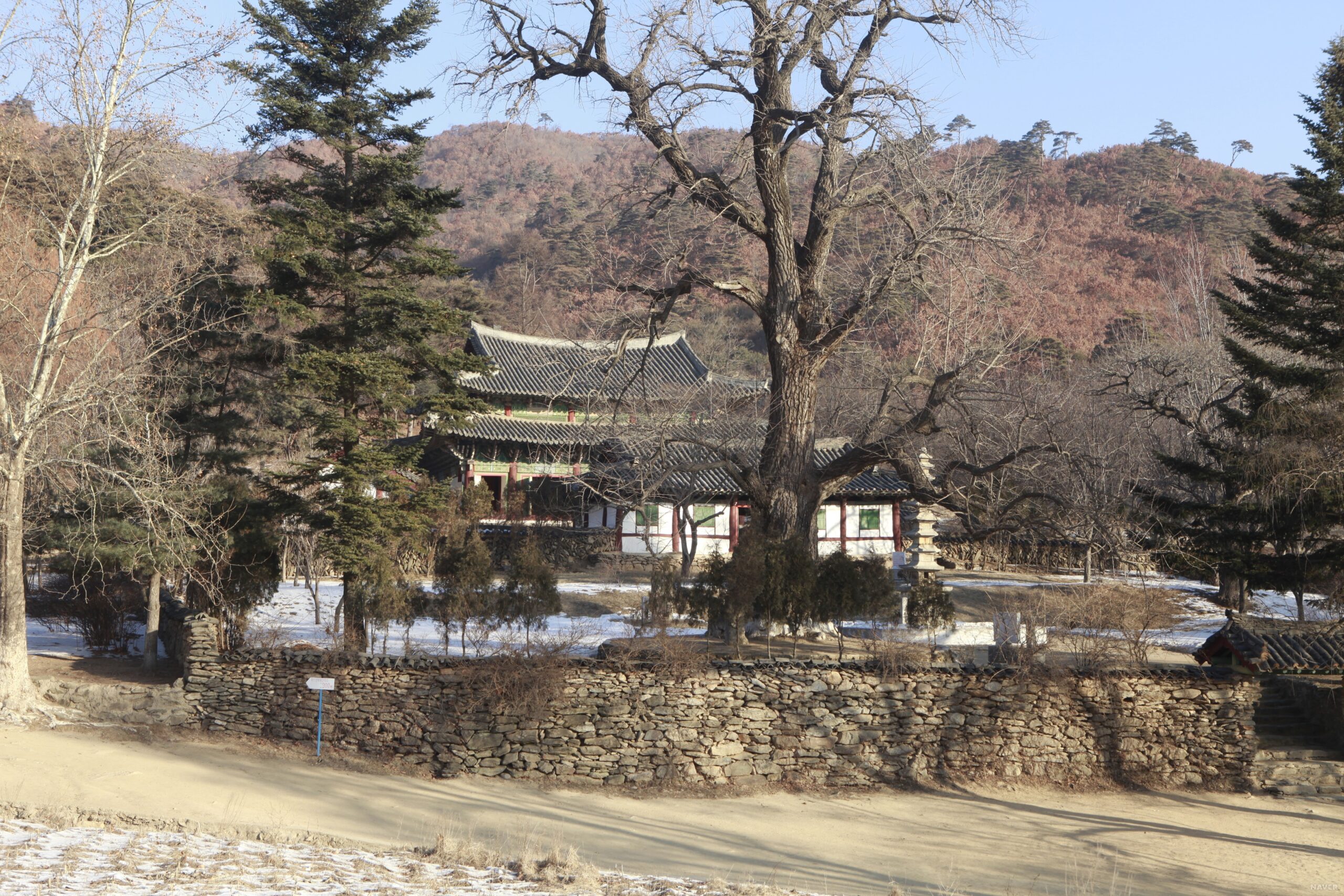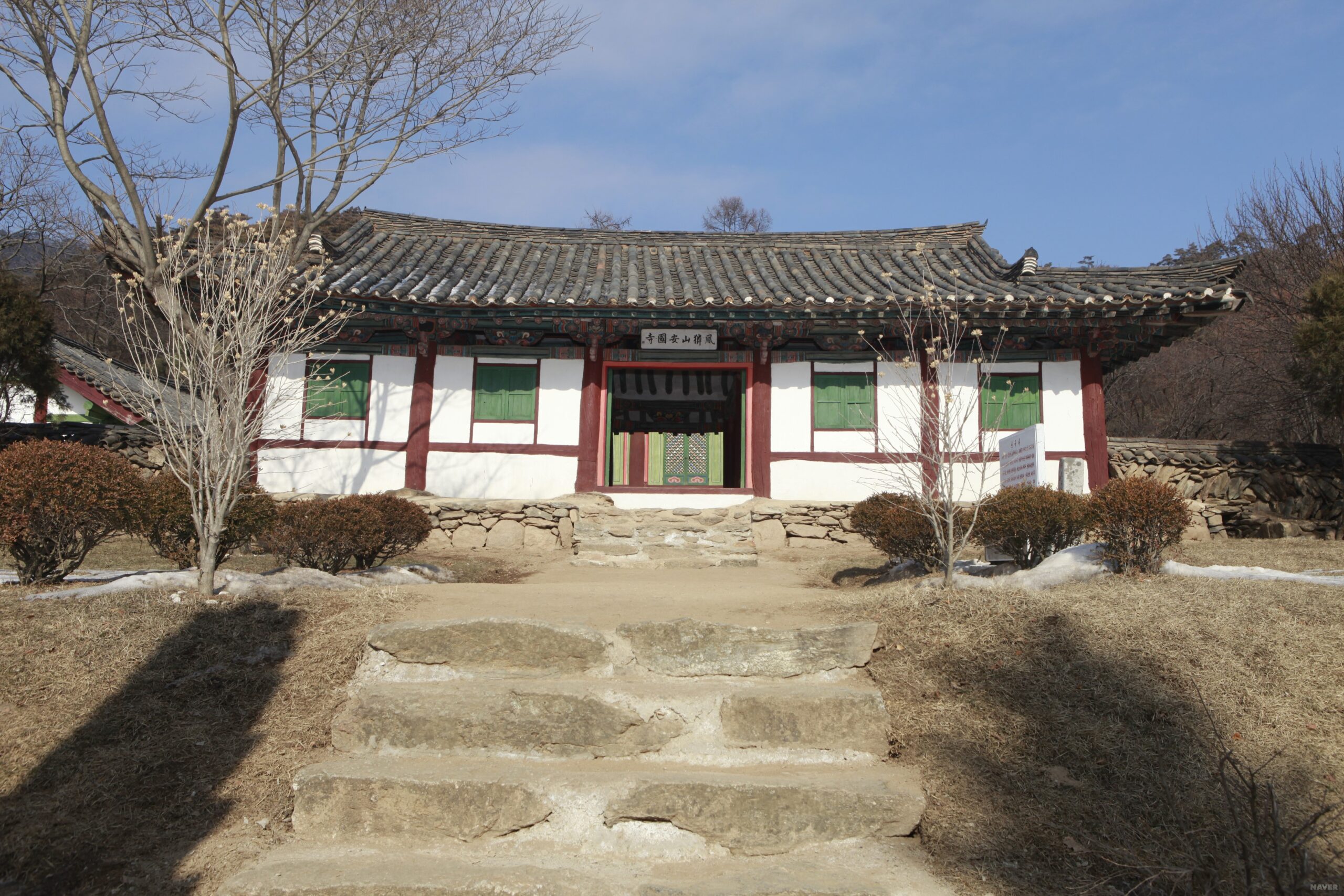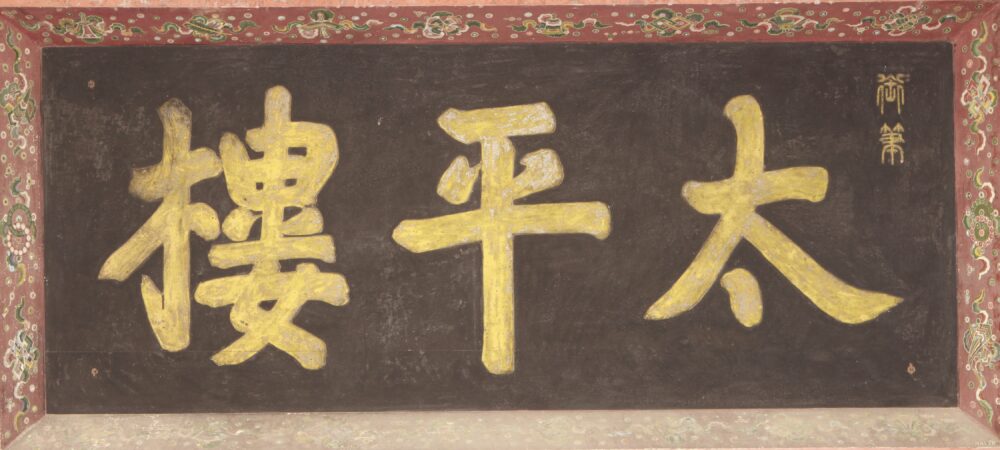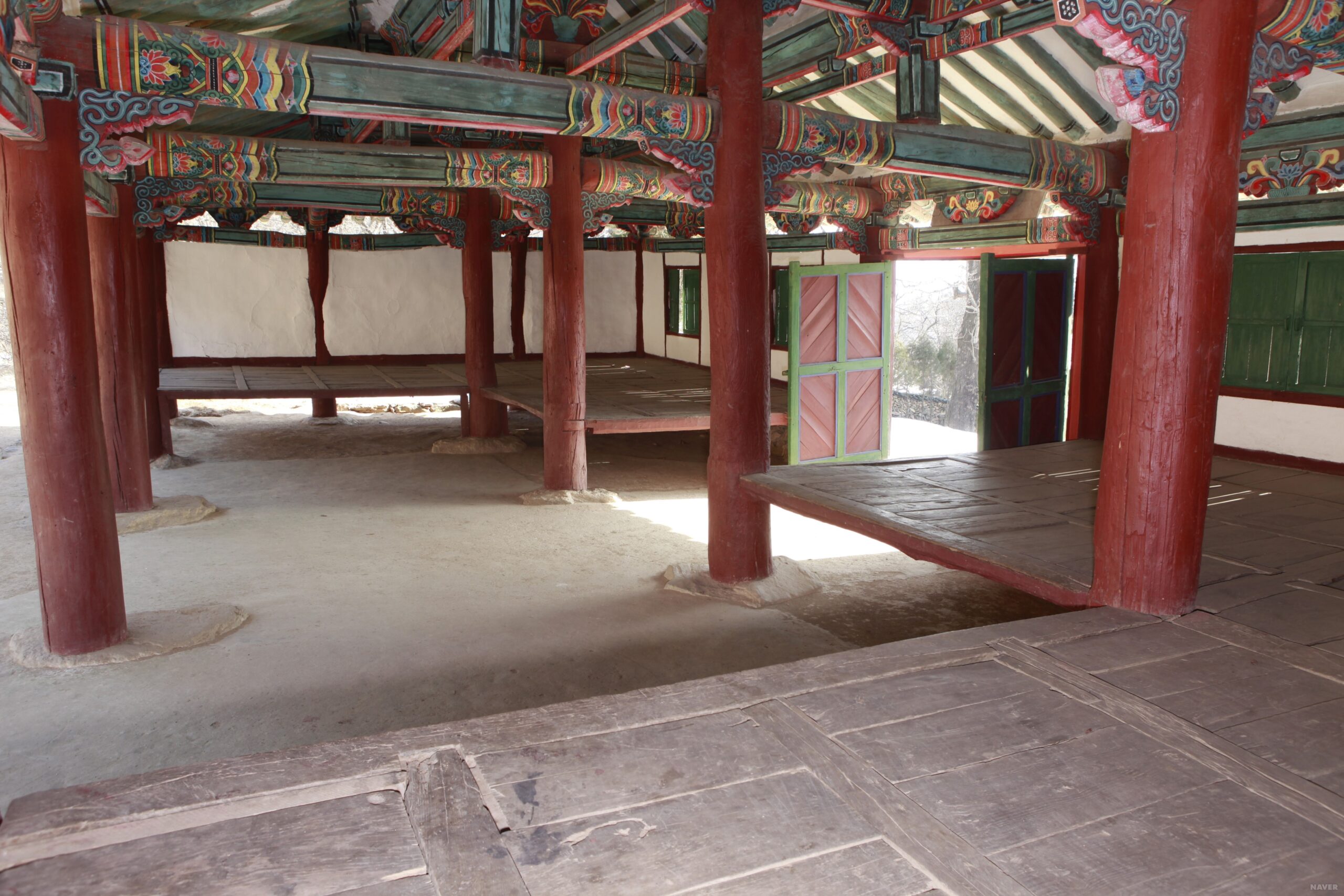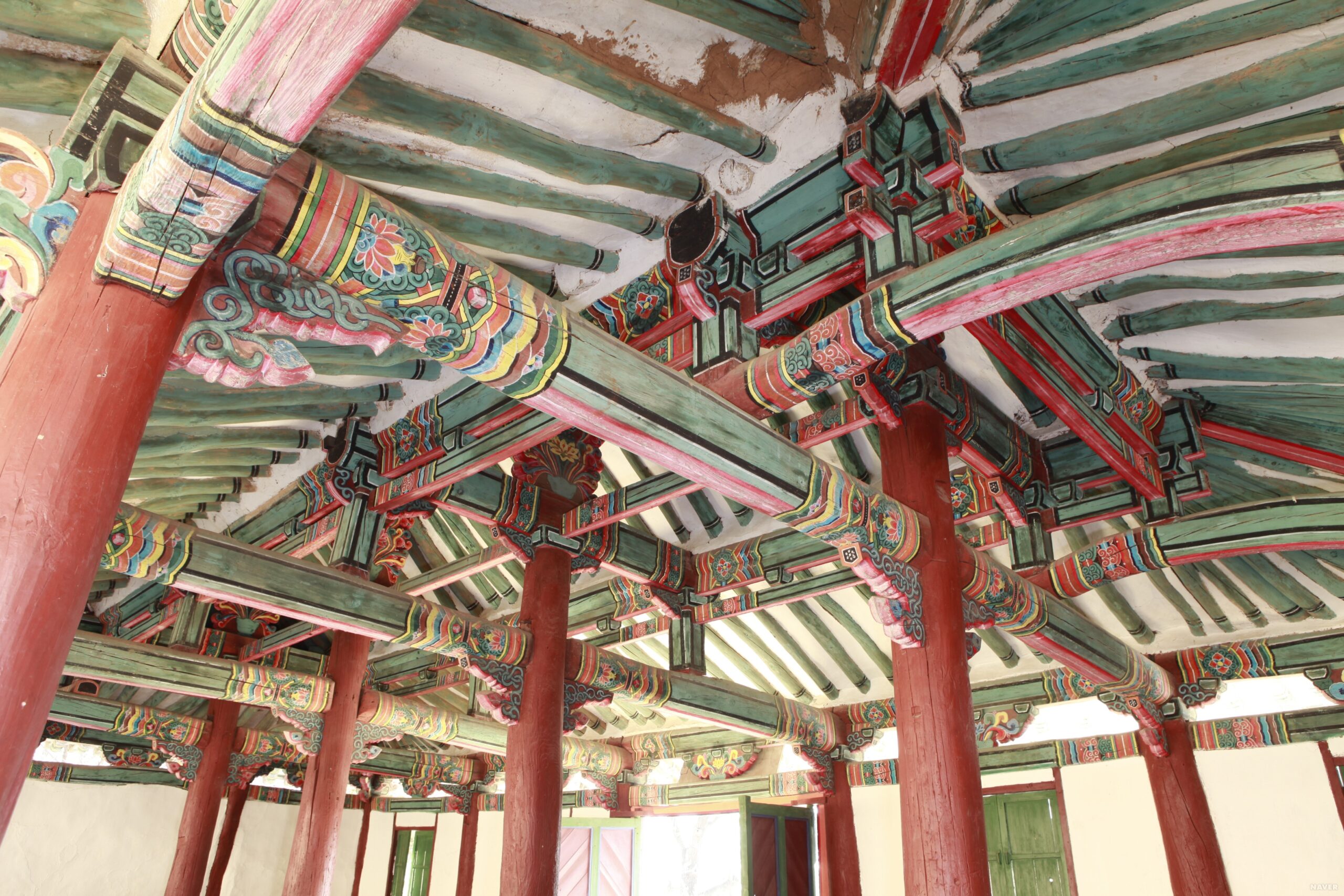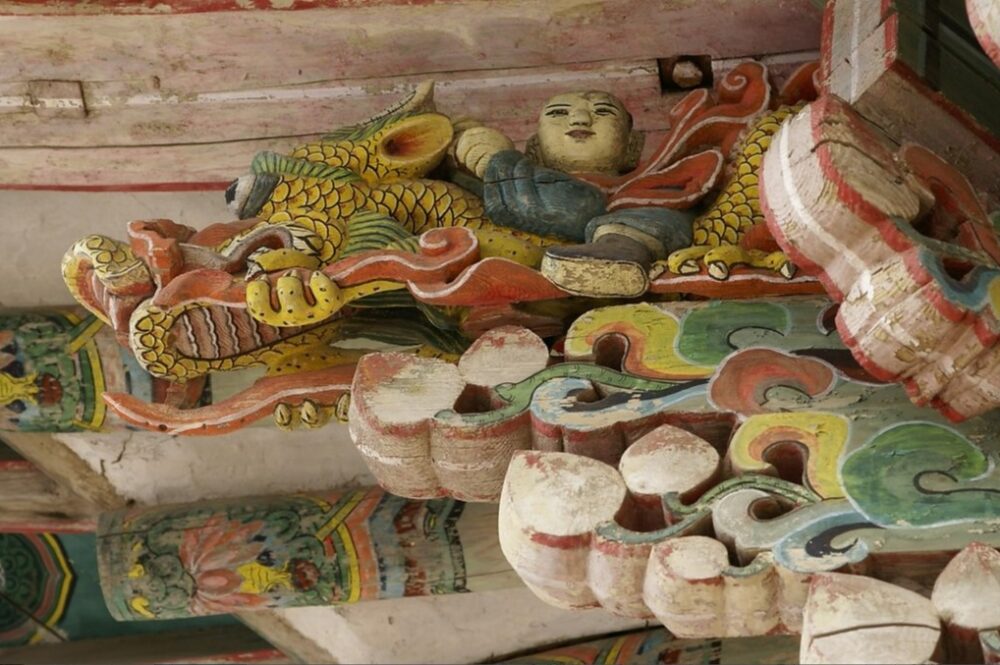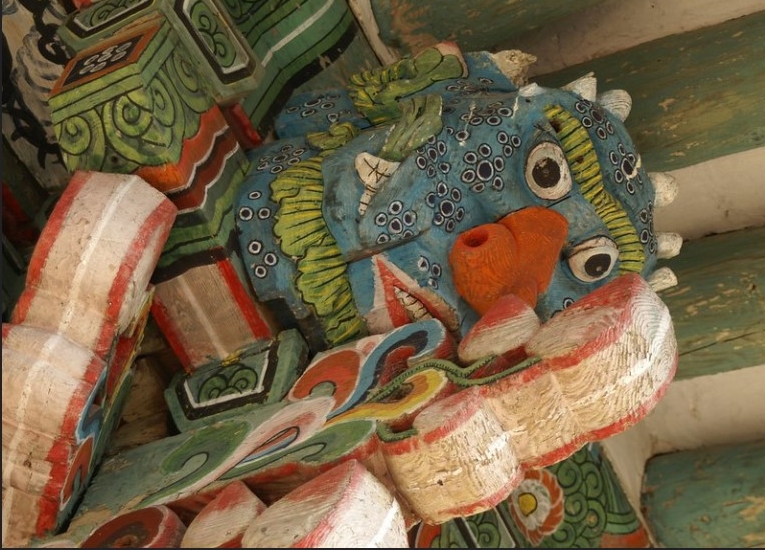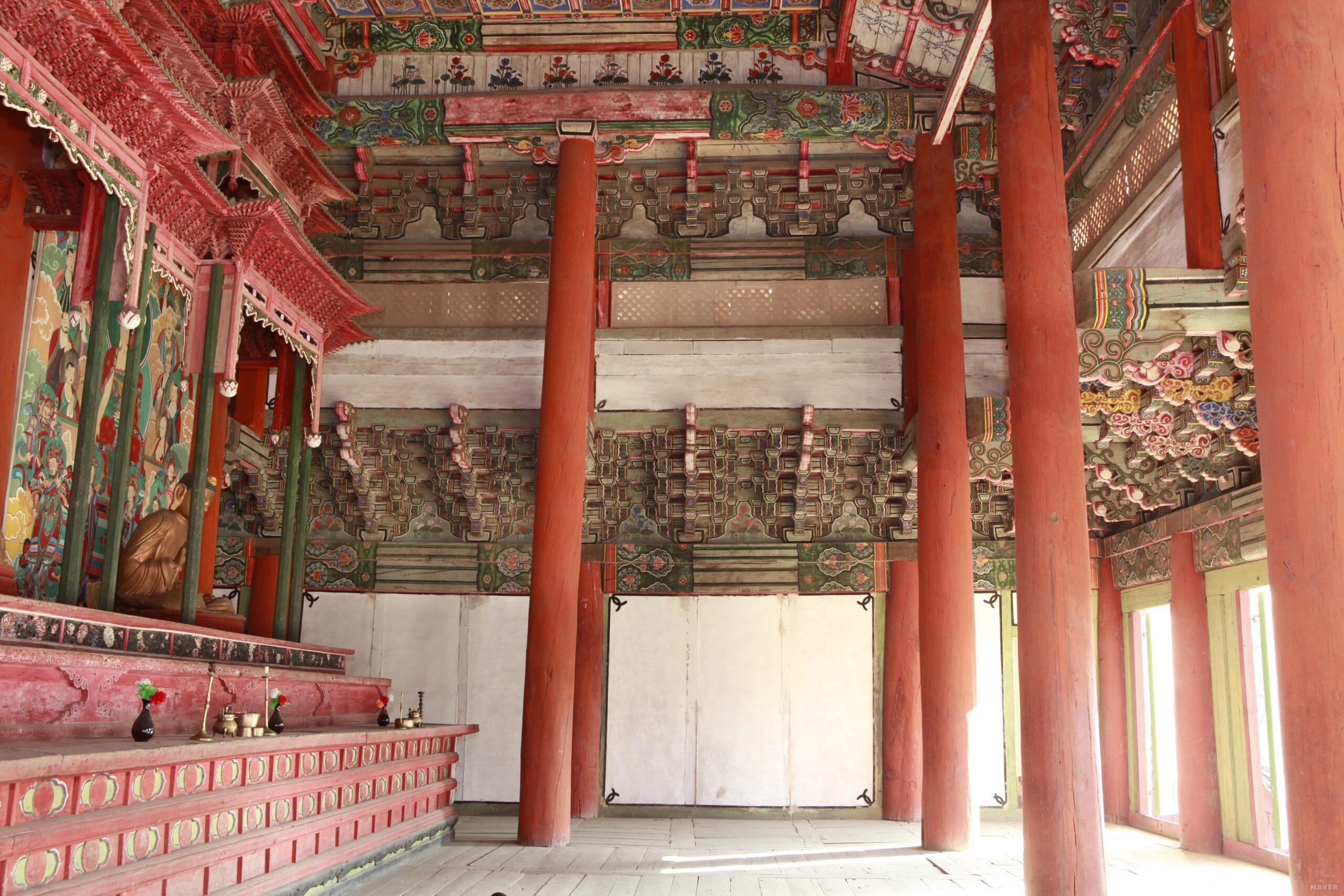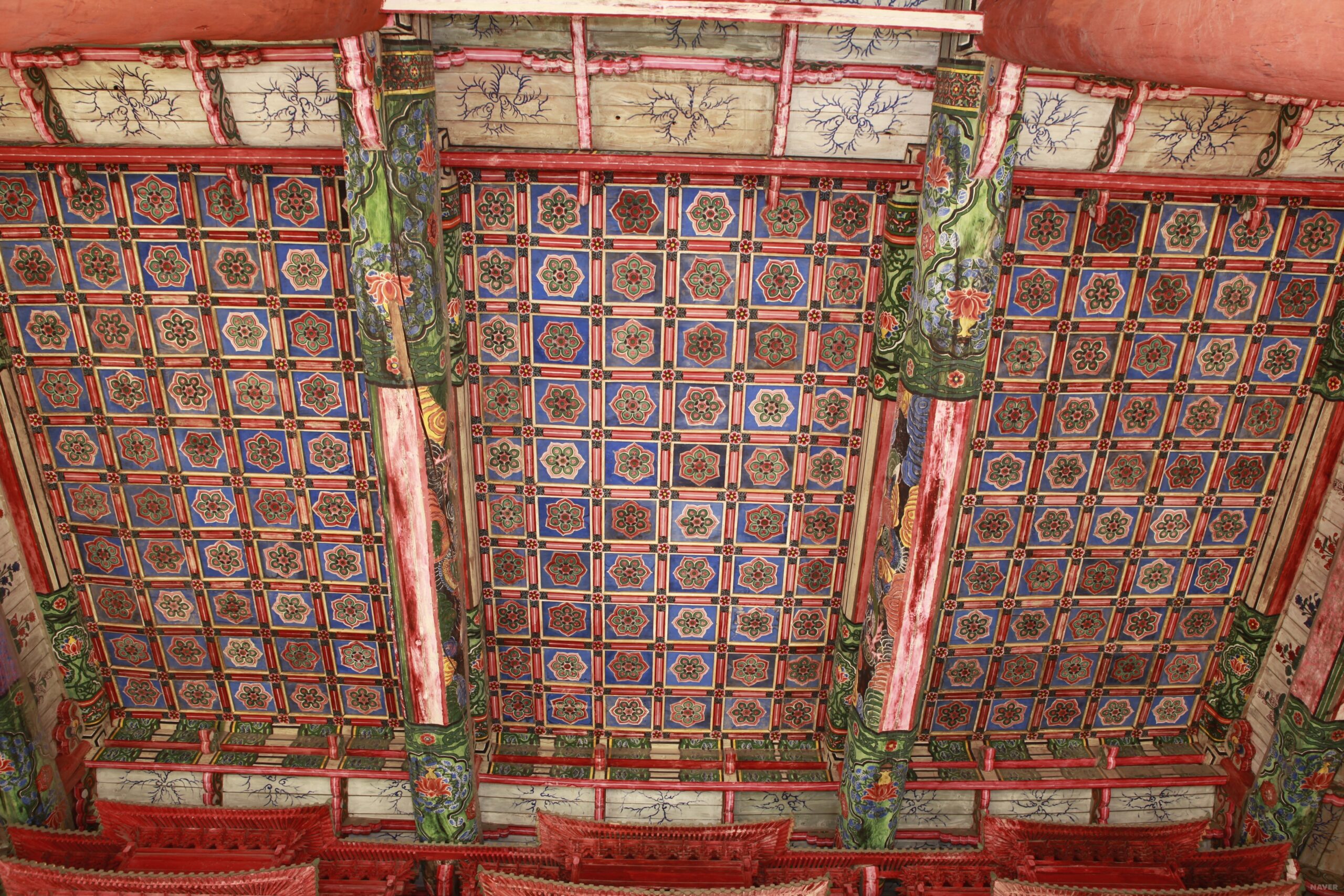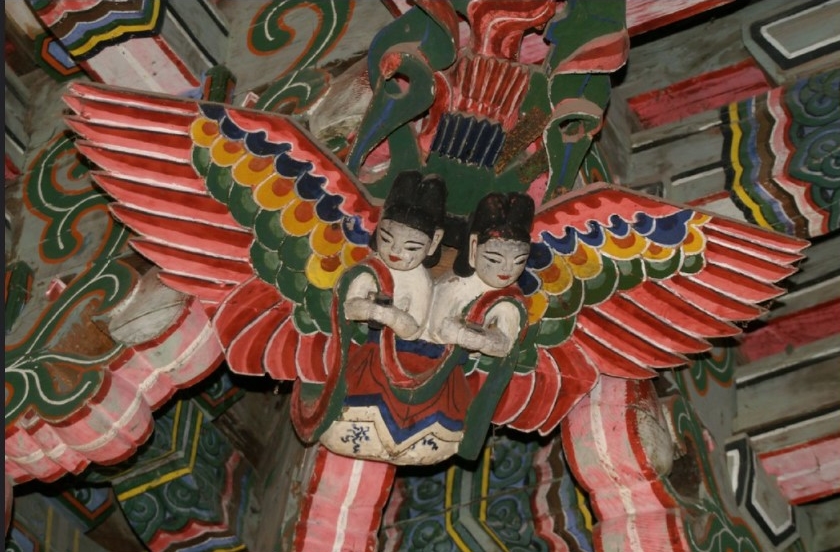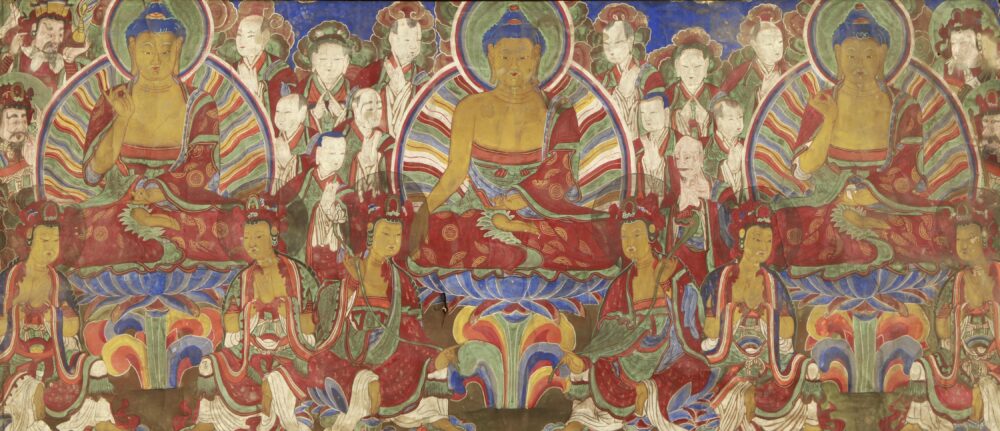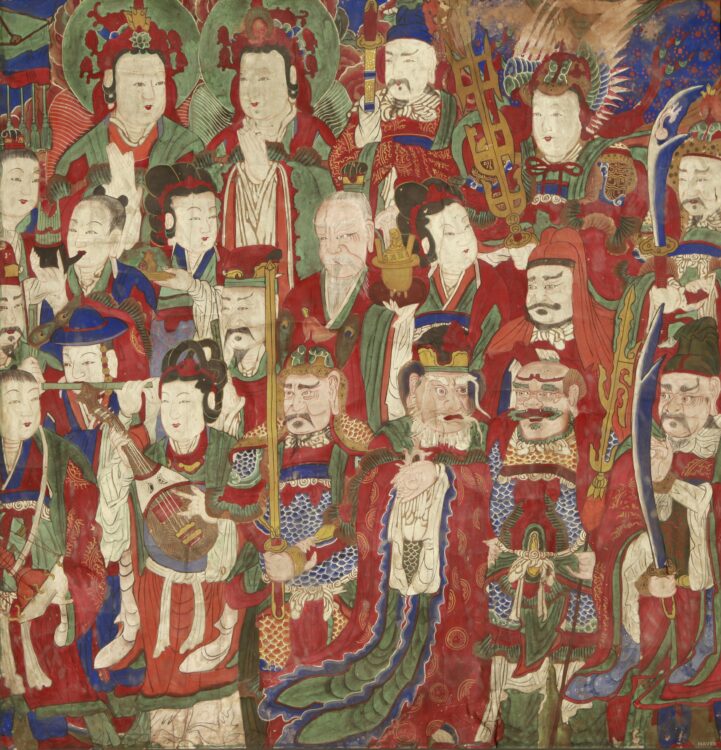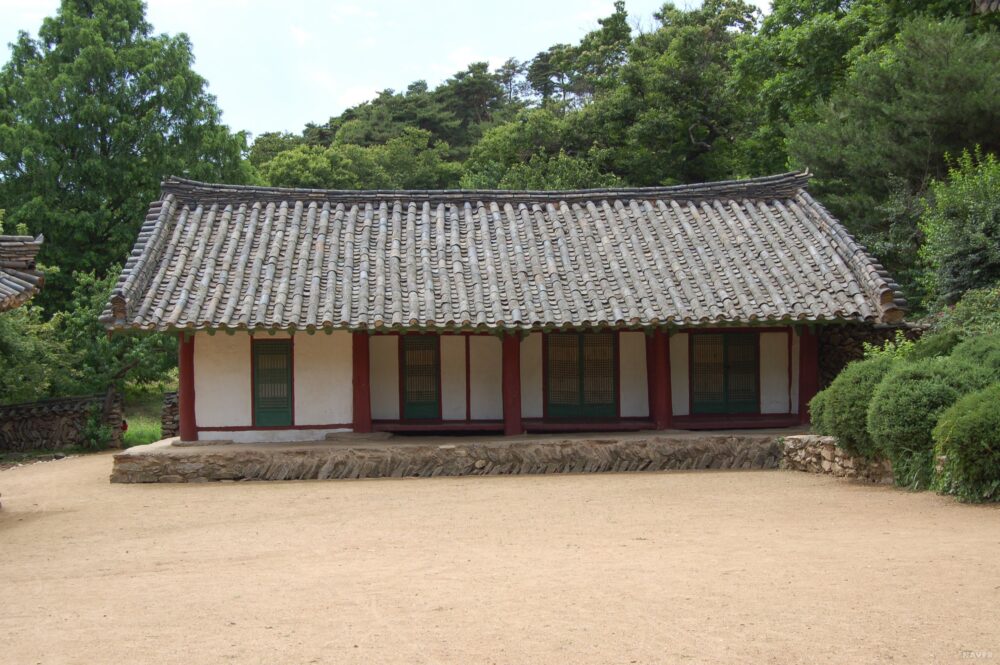Anguksa Temple – 안국사 (Pyongsong, Pyongannam-to, North Korea)
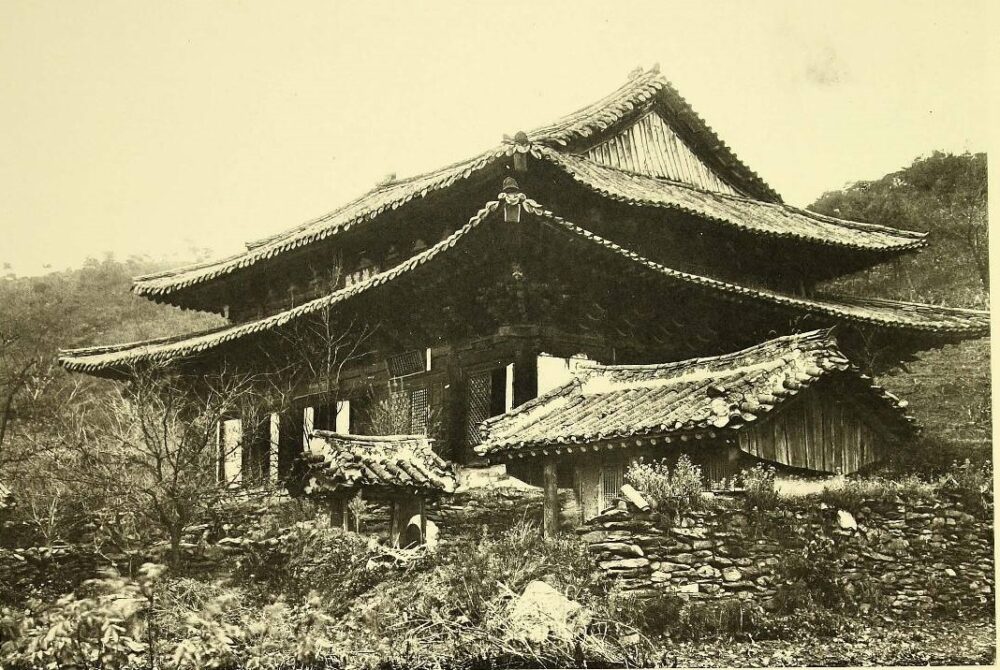
Temple History
Anguksa Temple is located in Pyongsong, Pyongannam-to, North Korea. It’s located on the slopes of Mt. Pongrinsan (217 m). And for the rest of this article, it should be noted, that the spelling of North Korean places will use the North Korean style of spelling. Anguksa Temple was first established in 503 A.D. Anguksa Temple is one of the oldest cultural sites still remaining in North Korea. Of particular importance is the two-story Taeungbo-jeon Hall [Daeungbo-jeon Hall] that was built during the mid-Joseon Dynasty (1392-1910). According to the writing on the eaves inside the Taeungbo-jeon Hall, the main hall was rebuilt in 1419. It was later rebuilt again in 1594, 1654, and 1785. In fact, there have been roof tiles that have been discovered in and around the temple grounds from the Goguryeo Dynasty (37 B.C. – 668 A.D.). Besides being called Anguksa Temple, the temple was formerly called Bongrinsa Temple, as well.
Additionally, there are several foundation stones in front of the Taepyong-ru Pavilion [Taepyeong-ru Pavilion]. This hints at the fact that the temple was formerly much larger than its current size. Anguksa Temple is North Korean National Treasure #34. And besides Anguksa Temple being a North Korean National Treasure, the temple is home to a ginkgo tree that was first planted in 1400, making it North Korean Living Monument #31.
Temple Layout
Presently, Anguksa Temple is home to a handful of shrine halls and buildings. The temple has a linear layout. Passing through an entry gate, and the outer courtyard, you’ll find the nine-story pagoda that dates back to the Goryeo Dynasty (918-1392). The pagoda has a wide square base with nine slender body stones atop it. The pagoda stands at 6.23 metres. It’s also in this area that you’ll find the ginkgo tree that dates back to the year 1400. Additionally, it’s also in this area that you’ll find the foundation stones to former shrine halls that once stood at Anguksa Temple.
To gain entry to the main temple courtyard at Anguksa Temple, you’ll need to pass through the Taepyong-ru Pavilion [Taepyeong-ru], which means “Perfect Peace Pavilion” in English. Stepping inside this entry gate, you’ll notice elevated platforms for people to sit or meditate on. While the exterior walls are adorned simply, the interior is filled with the wonderful dancheong colours. And the signboard to the entry pavilion is said to have been painted by King Sunjo of Joseon (r. 1800-1834).
Directly behind the Taepyong-ru Pavilion [Taepyeong-ru Pavilion] is the temple’s Taeungbo-jeon Hall [Daeungbo-jeon Hall]. Of all the temple shrine halls at Anguksa Temple, it’s this two-story structure that’s the most impressive. The two-story structure is unlike most other structures of this time. It has beautiful, intricate eaves on the outside with simplistic dancheong colours. Stepping inside the cavernous hall, you’ll find a long main altar with three images resting under large, red canopies. The central image is that of Birojana-bul (The Buddha of Cosmic Energy). The ceiling of the structure is painted with beautiful floral patterns, and the bracketing protruding outwards from the interior walls are both intricate and detailed. The Taeungbo-jeon Hall [Daeungbo-jeon Hall] stands seventeen metres in height and thirteen metres in width.
To the right of the Taeungbo-jeon Hall stands the monks dorms, which is known as the Yosachae. And to the left of the Taeungbo-jeon Hall is the Jupildae which is a library.
How To Get There
For now, in today’s political climate, you don’t. But hopefully one day soon we can. Below is a map of where to find Anguksa Temple in Pyongsong, Pyongannam-to, North Korea.
Overall Rating: 8/10
Again, for being located in the off-limits North Korea, and if you can actually get to Anguksa Temple, it rates as highly as it does. In addition to the temple’s dangerous location, the two-story Taeungbo-jeon Hall [Daeungbo-jeon Hall] is definitely the main highlight with its beautiful and intricate eaves both inside and out. The main altar statues, and the beautiful dancheong colours. Two other things of interest is the nine-story Goryeo-era pagoda and the Taepyong-ru Pavilion [Taepyeong-ru]. Hopefully one day soon, we’ll be able to visit this amazing temple.
Historical Pictures of Anguksa Temple
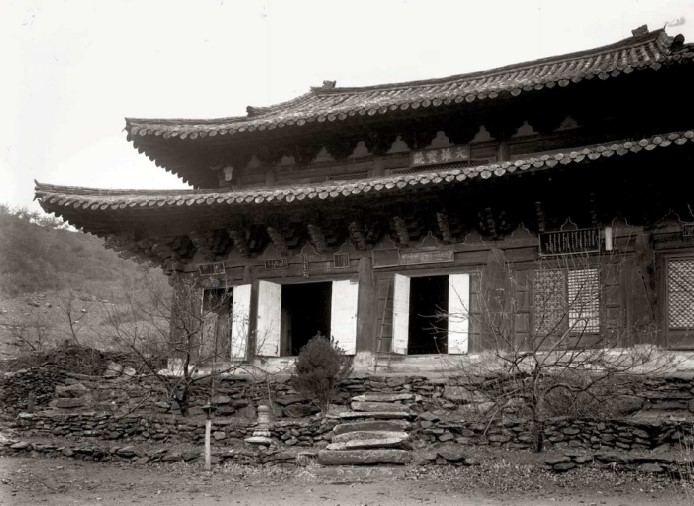
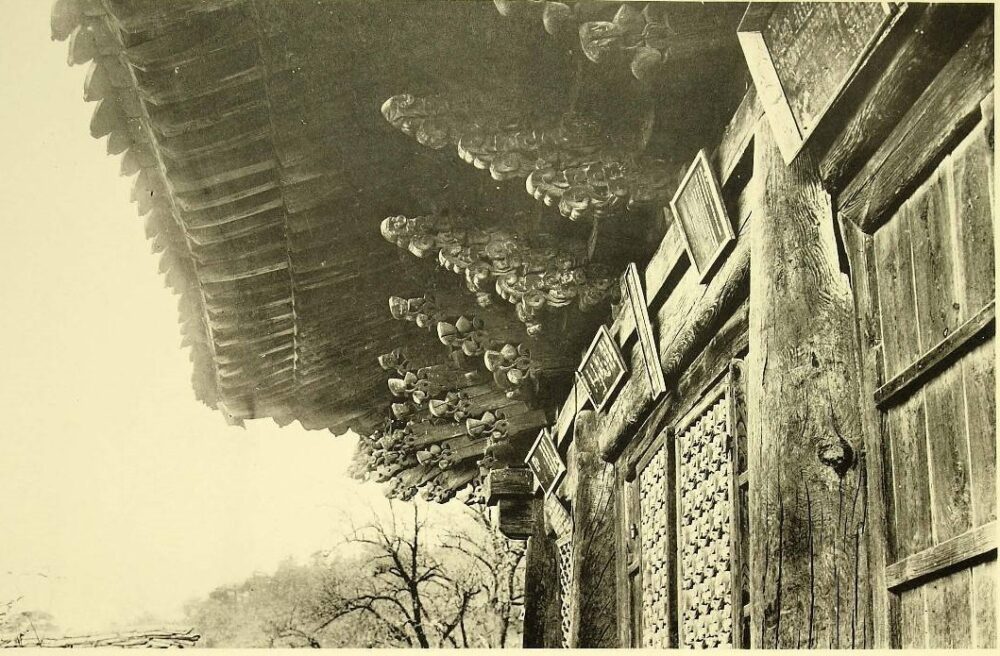
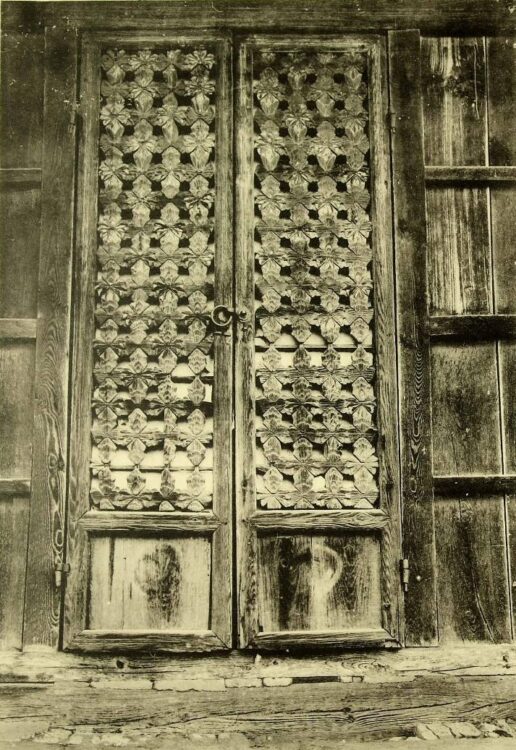
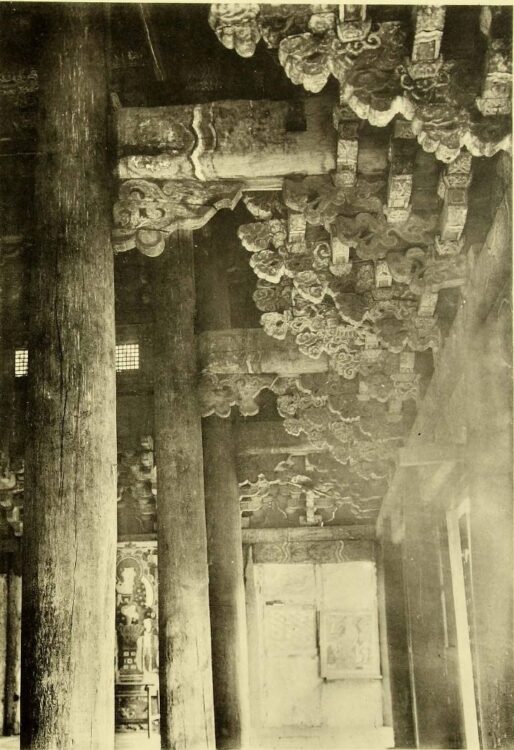
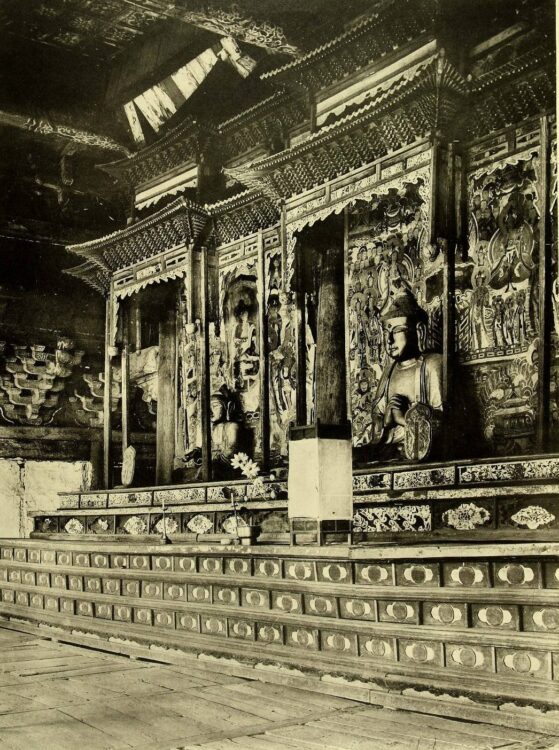
Anguksa Temple Now
